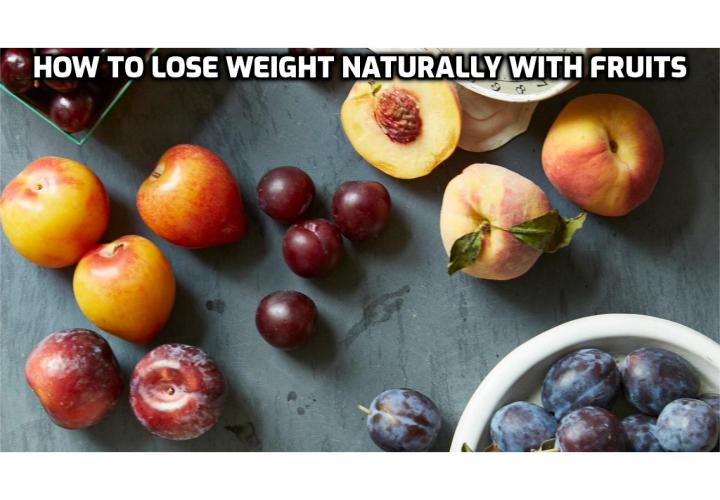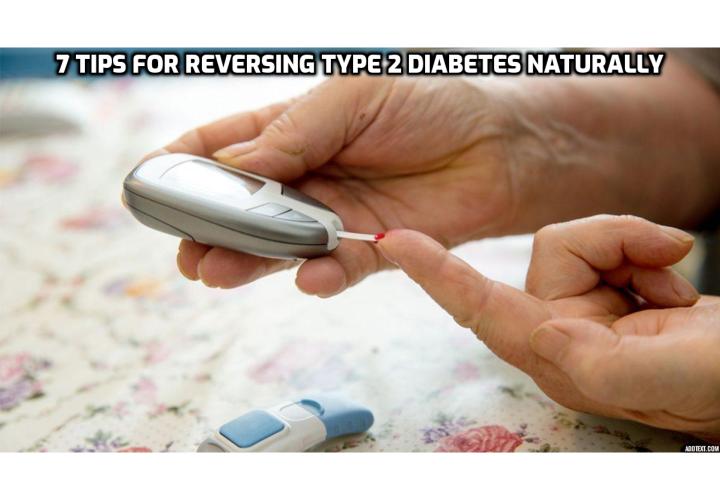Click HERE to Find Out How You Can Stay Healthy
& Be Free From the Various Common Lifestyle Diseases
Fruit
– Weight-loss Friend or Foe?
Fruit is sweet and healthy, and the natural
sugars keep unwanted cravings away.
Fruit is also loaded with vitamins, minerals,
and antioxidants.
It’s
also high in fiber so it’s filling and keeps you satisfied for longer.
But
can fruit actually help you lose weight? And do you eat more fruit to lose weight, or cut your food intake in general
but focus on fruit?
As
you can see, it’s a little more complicated than asking if fruit helps you lose weight.
Fruit contains large amounts of simple sugars which are known to cause obesity.
Using
that information, it would be reasonable to expect that fruit consumption
should contribute to obesity rather than weight reduction.
However,
research consistently shows that most types of fruit have anti-obesity effects.
Because
they’re loaded with vitamins and mineral, health organizations encourage
the consumption of fruit for weight reduction purposes.
So
yes, we can count fruit and berries are weight-loss friends!
You
see, there’s a big difference between a cube of sugar that you add to your
coffee and a piece of fruit filled with fiber, antioxidants, water, and
phytonutrients.
That
fiber is critically important for how our body processes the natural sugar, so
stick to fresh fruit, not juice or dried, which we’ll look at soon.
Lose Weight
Naturally - How fruit works with weight loss
To
lose weight you need to take in less calories, but
that doesn’t mean that you have to eat less.
That’s
where fruit comes in. Fruits and berries add bulk to our diets without adding a
lot of calories.
Fruit
can be used as a substitute for high calorie foods in our diet, helping us feel
full and satisfied.
If
we add fruits
like peaches, strawberries, and apple to our breakfast
cereals, we can cut down the cereal portion size. That reduces
overall calories, but we don’t have to starve ourselves.
Fruits
can be also used as a substitute for high glycemic index foods
in our diet and can help in weight loss.
You
can make a saladmuch more appealing (if you’re not already a salad fan) by adding fruit andberries.
You
should aim to eat five serving of fruits every day and opt for different
colors.
If
you’re trying to lose weight, you might eat more fruit and berries,
but it’s important to consider their sugar content and other properties.
Berries
are low glycemic and have less sugar, so they’re a really great choice for your
fruit. Plus, they’re easy to add to yogurt, cereal, oatmeal, and salads.
Scientists
at Harvard University found that increasing the daily intake of fruit can prevent weight gain, even if you continue
consuming the same amount of calories.
Researchers
suggest that the benefits of eating fruit comes from the flavonoids they
contain; flavonoids are a group of phytonutrients found in fruits and
vegetables that impart color.
Some
experts say the secret to losing weight are flavonoids.
A
CNN article titled, “The secret to maintaining and losing weight: Berries, onions and wine” said,
“Flavonoids are natural compounds found in plants that, among other things,
help the plant cells communicate and create the color so a plant is attractive
to the bees, butterflies and birds that help with pollination. For humans,
flavonoids seem to push the right biological buttons that keep bodies
from gaining weight.”
The
most effective type of flavonoids, called anthocyanins, are found in
strawberries, cherries, blackberries, blueberries, grapes, radishes and
blackcurrants.
Other
studies have shown that flavonoids might increase energy expenditure while
decreasing fat absorption.
Sugar content in
fruit
But
fruit is not created equal when it comes to the nutritional value.
Some
fruits are higher in fiber and pectin, both of which work as natural fat
burners that can help boost your metabolism and aid weight loss.
That
means that some fruits like mangos have more sugar but still help you lose
weight due to their other properties.
Other
fruit have higher amounts of natural sugar, and we should consider that for
overall calories.
The
amount of sugar varies from fruit to fruit. Let’s look at how many grams
of sugar there are in a cup of different fruits.
1
cup of avocado has 1 or less gram of sugar.
1 cup of raspberries has 5 grams of sugar.
Strawberries, 7 grams.
Blackberries, 7 grams.
Watermelon, 9 grams.
Cantaloupe, 9 grams.
Peach or Apple, 13 grams.
Grapefruit, 16 grams. (Who would have thought that?)
Plums, 16 grams.
Banana, 18 grams.
Mango, 23 grams.
Raisins, 86 grams.
Yikes!
86 grams of sugar in one cup is a lot. You can see that dried fruit is not the
same as fresh.
This
list shows you that some fruits are much lower in sugar content, so those work
better for dieting.
While
we’re talking about which fruits to avoid, it’s important to note that drinking
juice and eating dried fruits can backfire if you’re hoping to lose weight.
Lose Weight
Naturally - Avoid Juice!
The
problem with juice is that you get all the fructose without the fiber.
When eating in whole fruit, fructose is a good energy source, and
the fiber helps us digest it without bad side effects.
Without
the fiber, it’s akin to eating corn syrup or high fructose corn syrup, which
are causing an epidemic of obesity and disease in our society.
Fruit
juices are simply not a better option for weight control than sugar-sweetened
beverages.
They
can be a treat if you’re not dieting, but best to avoid them when looking to lose
weight.
Ounce
for ounce, fruit juices are as high in sugar and calories as sugary sodas. That
even applies to juices 100% fruit juice with no added sugar.
A
Harvard School of Public Health study tracked the diet and lifestyle habits of
120,000 men and women for 20 years, and the study found that people who
increased their intake of fruit juice gained more weight over time than people
who drank less or none.
Lose Weight
Naturally - Mostly avoid dried fruit
Dried
fruit is not as bad as juice, but remember that raisins had 86 grams of sugar
per cup.
Drying
fruit concentrates the calories and sugar, making it easier to consume excess
calories.
Dried
fruit is good in trail mix, for when you’re out hiking in hot weather and
burning lots of calories.
That
means that dried fruit does the opposite of what you want your fruit to do when
losing weight. It won’t fill you up and provide hydration, or help you feel
fuller for longer.
Dried
fruit is better than juice because it preserves the fruit’s cellular structure,
so there might be a place for it in some diets.
Lose Weight
Naturally - Smoothies, weight loss friend or foe?
After
reading about how destructive juice can be to our diet, you might think that
smoothies are out too.
But
then again, everyone is proclaiming the health benefits of smoothies.
Here’s
the difference between juice and smoothies:
To
make juice, we crush the fruit and take only the juice. We might get some pulp,
but mostly we leave the fiber behind.
To
make a smoothie, we take the whole, fresh or frozen fruit and blend it up.
Making
a smoothie is much like chewing up our fruit.
Dr.
Katz spoke about smoothies on Oprah.com in an article titled, “Does Blending
Fruit Reduce its Fiber Content?”
He
said, remarkably, he couldn’t find any studies on what a blender does to the
fiber content, but he pointed out that we chew up fruit and any food with
fiber, and we still get the benefit from it.
So,
smoothies can offer health benefits and help us get more vitamins and minerals.
Take
heed, however. It’s much easier and faster to drink a smoothie, so you have to
watch your calorie intake.
On
top of that, we don’t register liquid calories the way we do food calories. Our
brain doesn’t always understand that we’re getting calories.
You
can help on that front by not adding juice, sugar, or another sweetener to your
smoothie.
And,
in the end, a smoothie can be very healthy and help you lose weight, especially
if you add dark green leafy vegetables and good fats into your drink.
Lose Weight
Naturally - Fruits that help you lose weight
We
can see that the sugar content varies greatly from fruit to fruit.
Here’s
a few that are low calories and filling, and sure to help your weight loss!
Watermelon,
a summer favorite, only has 30 calories per 100 grams, and it keeps you
hydrated. Watermelon is also rich in amino acid arginine which helps in burning fat.
Guava
is rich in fiber, has a low glycemic index, and prevents constipation. Guava also boosts your
metabolic rate which helps in weight loss.
Pears
are a great source of Vitamin C and fiber, and they help keep your cholesterol levels in check.
Oranges
are nutrient-dense and low calorie with only 47 calories per 100 grams.
Oranges
are even considered a negative calorie fruit because it takes more calories to
burn than what you consume.
Blueberries
are rich in antioxidants and boost your metabolic rate. Regular consumption is
also known to reduce insulin resistance, hypertension, and cholesterol.
Strawberries
help in the production of the fat burning hormones adiponectin and leptin, so
this sweet berry gives you a higher metabolism.
Peaches
are very filling because they’re 89% water. Being rich in fiber,
they help in reducing hunger too.
Fruits
can be enjoyed any time of the day and with every meal. In fact, that will help
you cut down on higher calorie foods.
Avocado
is actually a fruit, but without sugar. It can make a huge difference in losing
weight and fighting disease.
Another
easy way to include fruits in your daily diet is to eat them in as a snack between meals, which helps you control
cravings and prevent overeating.
Mix
fruit and berries into yogurt or cereal, throw them in salads, or serve
them with as a sweet accompaniment for dessert to curb your sweet tooth.
For more ideas to lose weight naturally, watch this video - 20
Foods That Help You Lose Weight
Written
by Dr. Carl Bamlet who is a chiropractor and a certified nutrition specialist.
He creates the Food, Health & You Complete
Implementation System
which is a lifestyle guide primarily focusing on diet and nutrition.
Dr.
Carl Bamlet is a cancer survivor. He was diagnosed with brain cancer at the age
of nineteen, underwent surgeries and chemotherapy, adapted to a lifestyle that
eliminates all processed foods and the various toxins that people routinely get
exposed to due to the modern diet. He has been cancer free for twelve years.
He
is healthy and free from the various common lifestyle diseases. With the help
of this ebook, you can also prevent cancer, autoimmune diseases, irritable
bowel syndrome, metabolic disorders, diabetes, and many other ailments.
This
holistic guide will help you to embark on a lifestyle that is rid of everything
that ails our modern diet. The lifestyle guide does not recommend any
medication or fad diets. There is no expensive proposition or quaint lifestyle
changes. The different plans are easy to follow and they are relevant for
people of all ages and ethnicities, regardless of their history of medical
conditions.
To
find out more, click on Food Health & You


